Tandem vs. Solo Skydiving: Which Experience is Right for You?
Tandem Skydiving
Posted by: James La Barrie
2 years ago
The feeling of the wind rushing past your face, the world of possibilities beneath you, your heart racing as you prepare for your dance with gravity – it sounds so amazing! But which first-jump adventure will you choose? A tandem skydive or solo skydive? Either option is sure to take you for a thrill. Let’s unravel the differences between the two and help you discover which option is best for you!
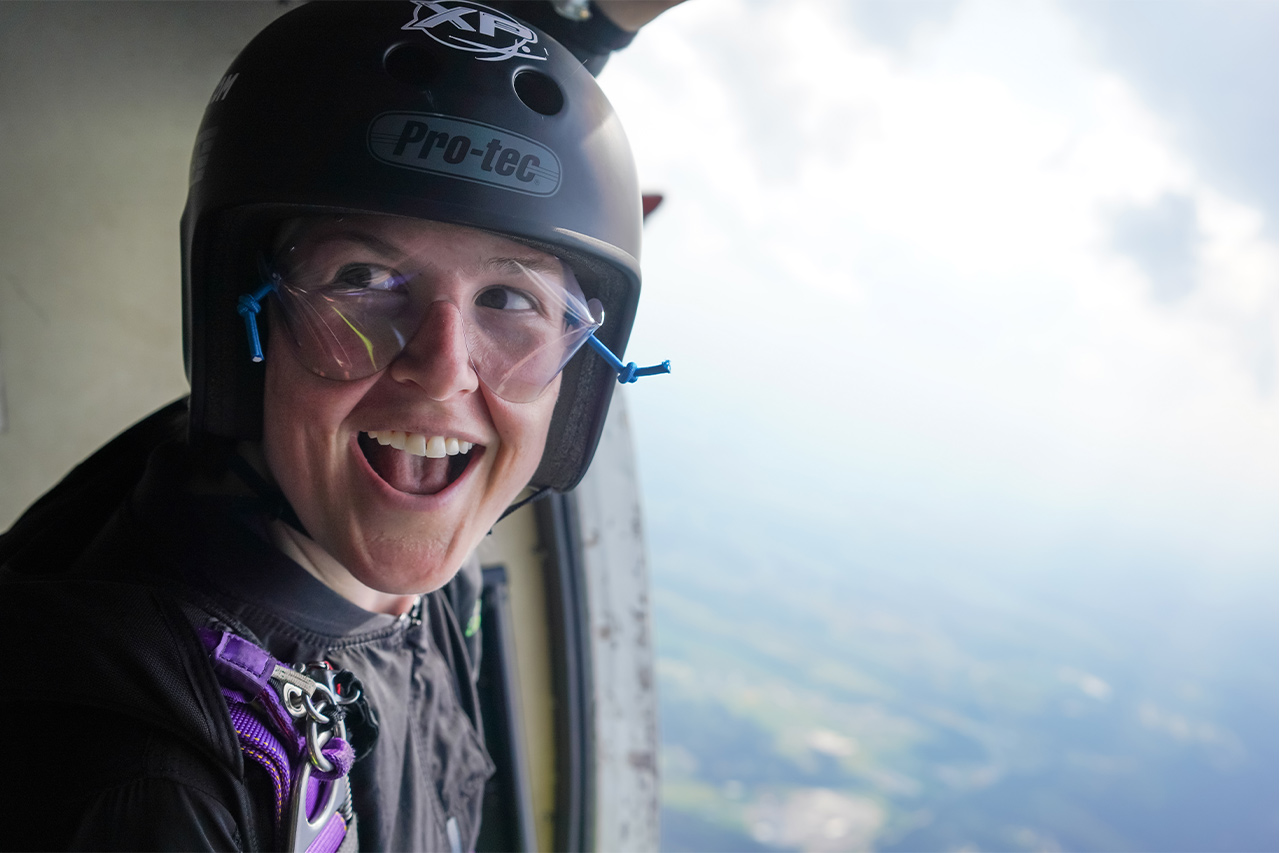
What’s the Difference Between Skydiving & Tandem Skydiving?
Tandem skydiving is one of the most popular ways for first-timers to experience skydiving. On a tandem skydive, the student skydiver is harnessed to the front of a qualified and professional tandem instructor. The tandem skydive instructor is responsible for operating all of the skydiving equipment and carrying out emergency procedures. This tandem experience offers novices and thrill-seekers an opportunity to taste the excitement of skydiving without the need for extensive training or responsibility of operating/landing their own parachute.
On a solo skydive, the skydiver is responsible for operating their own skydiving gear and landing a parachute independently. Solo skydiving demands rigorous training and preparation before skydiving by yourself (solo).
The most popular way to begin skydiving solo is through the Accelerated Freefall (AFF) Program which is to be conducted by an AFF Instructor certified by the United States Parachute Association (USPA). The allure of solo skydiving lies in the independence and accountability of managing your own skydiving experience – it’s complete freedom!
Here’s a snapshot of solo skydiving vs. tandem skydiving at USPA Member Dropzones. Call your local dropzone to learn if it differs in your country.
| Tandem vs. Solo Skydiving | ||
| Solo Skydiving (AFF) | Tandem Skydiving | |
| Training | ≥ 4-8 hours ground school | Generally < 30 minutes |
| Freefall | Initial training involves jumping with 2 instructors; student deploys their own parachute | Jump with 1 instructor – share the same parachute system; instructor deploys parachute (student may be allowed to pull parachute) |
| Parachute | Student is alone under canopy | Student and instructor descend together under 1 parachute; instructor controls canopy (student may be allowed to) |
| Availability | Some dropzones offer AFF Training | Most (if not all) dropzones offer tandem skydives |
| Cost | $$$$ | $$ |
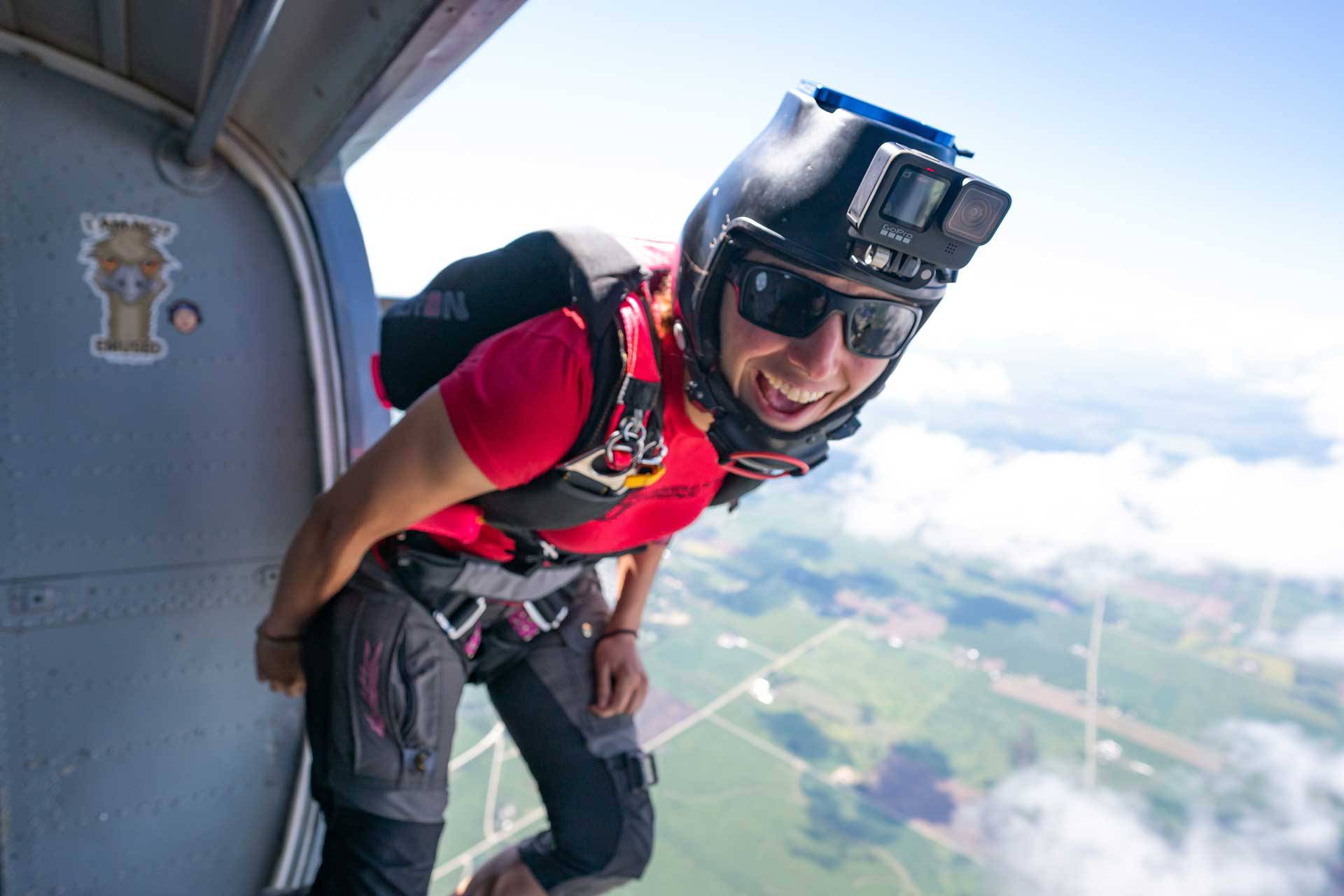
Is Tandem Skydiving Safer Than Solo?
Safety is paramount in any skydiving experience, regardless of whether it is a tandem or solo. Both methods adhere to strict safety protocols, but the level of risk perception may vary. And while skydiving is inherently a risky sport in general, we can weigh the added level of risk depending on the situation.
On a tandem skydive, you’ll be attached to a highly experienced D-licensed skydiver with an FAA Class III medical license who has at least three years in the sport and a minimum of 500 skydives under their belt. Whereas, on a solo skydive you would be accompanied by AFF instructors in the beginning during the freefall portion, but once the parachute is deployed, you’re on your own!
If we look at the statistics provided by the United States Parachute Association (USPA), most skydiving related deaths/injuries happen with students or licensed skydivers operating their own parachute rather than tandem students on a tandem skydive. This is usually due to an experienced (or inexperienced) skydiver making an error in judgment while landing a perfectly functioning parachute. So, while we would never say that skydiving is “safe”, you might say that tandem skydiving can be safer than solo skydiving.
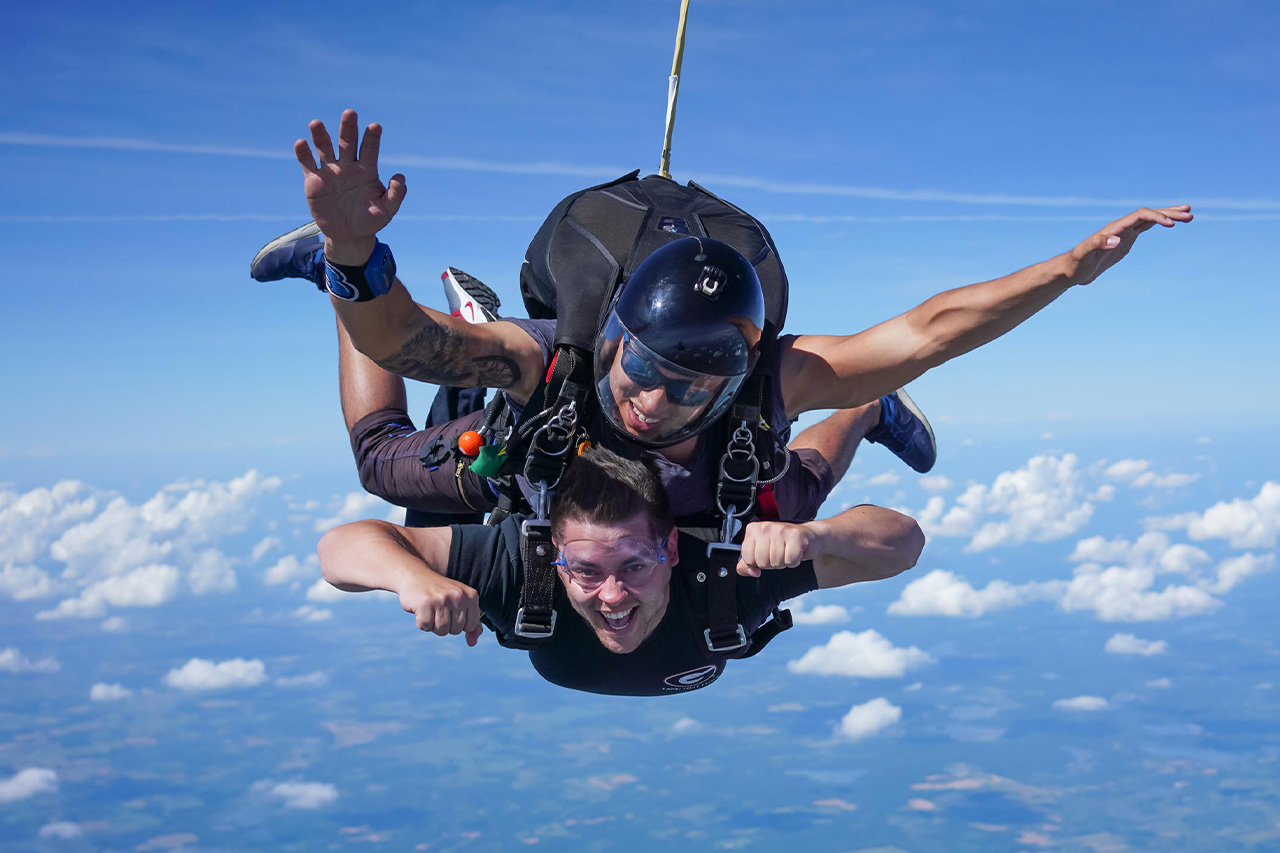
Can You Skydive Alone Your First Time?
How many tandem jumps before solo? The answer isn’t as black and white as it may seem. The answer depends on the dropzone you’re jumping from and what they’re prerequisites are before attending an AFF ground course.
Some dropzones do require at least one tandem skydive before beginning the solo skydiving, AFF program. This gives the aspiring skydiver an opportunity to get better acquainted with what they are about to experience before committing to achieving a skydiving license.
Sometimes, dropzones will require a tandem skydive before beginning the course AND a tandem skydive during the course. Other dropzones don’t require any prior experience before jumping into their solo skydiving journey – which means your first jump will be your solo jump!
Your dropzone and student program of choice is totally based on your preferences and what you feel comfortable with. However, it is normally recommended to experience a tandem skydive before becoming a solo skydiver just to make sure you even like it (which you most likely will)!
How to Skydive Solo
For those interested in skydiving solo, the journey begins with enrolling in a certified skydiving school that offers the AFF program. Depending on your dropzone of choice, there may be some additional solo skydiving requirements to fulfill before attending the initial ground course.
AFF consists of a comprehensive series of progressive levels designed to impart the lessons and skills necessary to become a knowledgeable and confident skydiver who is focused on safety. The training typically begins with a ground course, or First Jump Course, where students will learn about the skydiving equipment, proper exit and freefall body positions, emergency procedures, and canopy control.
Following the successful completion of the ground course, student skydivers will take the skies for the first jumps under the close supervision of certified AFF Instructors. As students progress throughout the program, they gain proficiency and begin to become more independent. Once the student skydiver has completed all jumps and requirements necessary, they will be eligible to apply for the USPA A License (or equivalent). And once you’re licensed to fly, you are free to jump independently, with other skydivers, and at other dropzones across the globe!
Ready to start your skydiving adventure? Contact your dropzone to book your skydive and learn about training opportunities. Blue skies!
Categories:
You May Be Interested In:
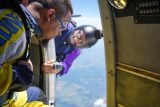
Preparing for a Skydive: Physical and Mental Fitness Tips
1 year ago by James La Barrie
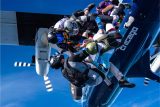
The Psychological Benefits of Skydiving: Overcoming Fear & Building Confidence
2 years ago by James La Barrie
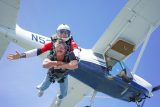
Skydiving Myths Debunked: Separating Fact From Fiction
2 years ago by James La Barrie
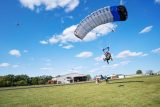
Why is Skydiving So Expensive?
2 years ago by James La Barrie
DZ Locator
Find a skydiving center near you.
